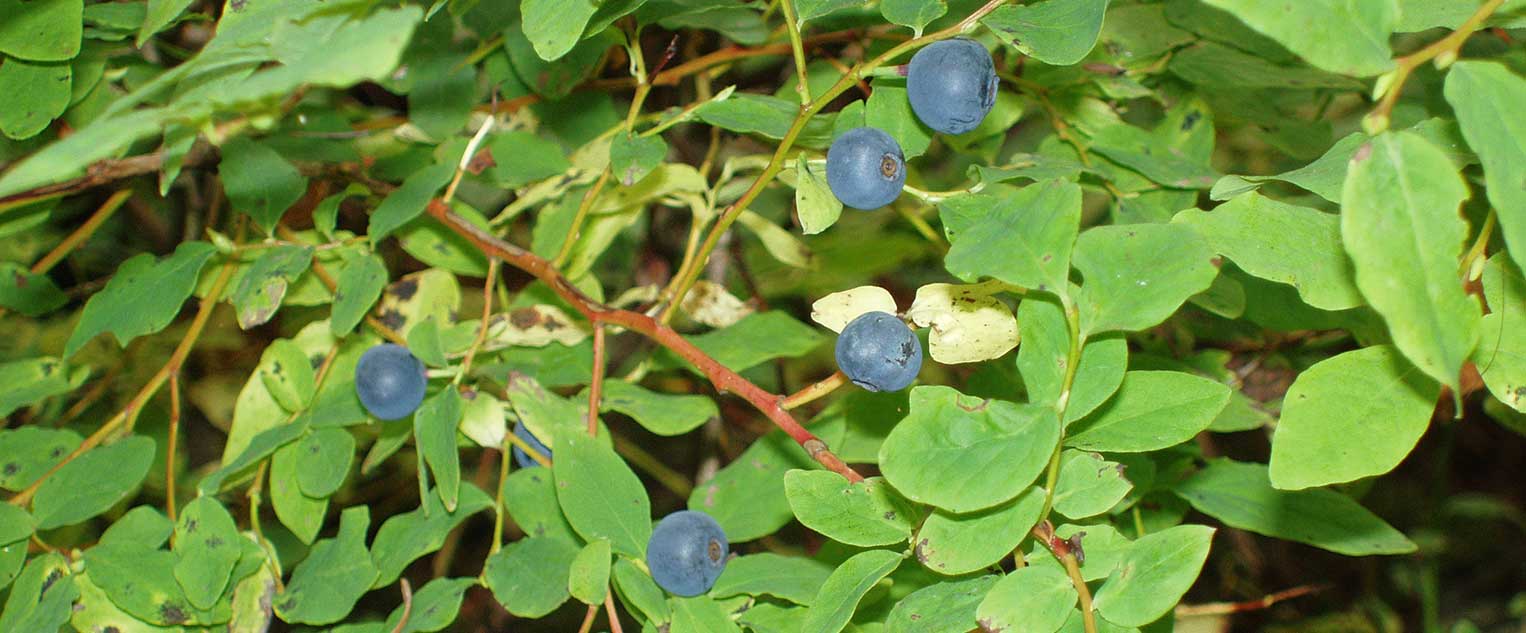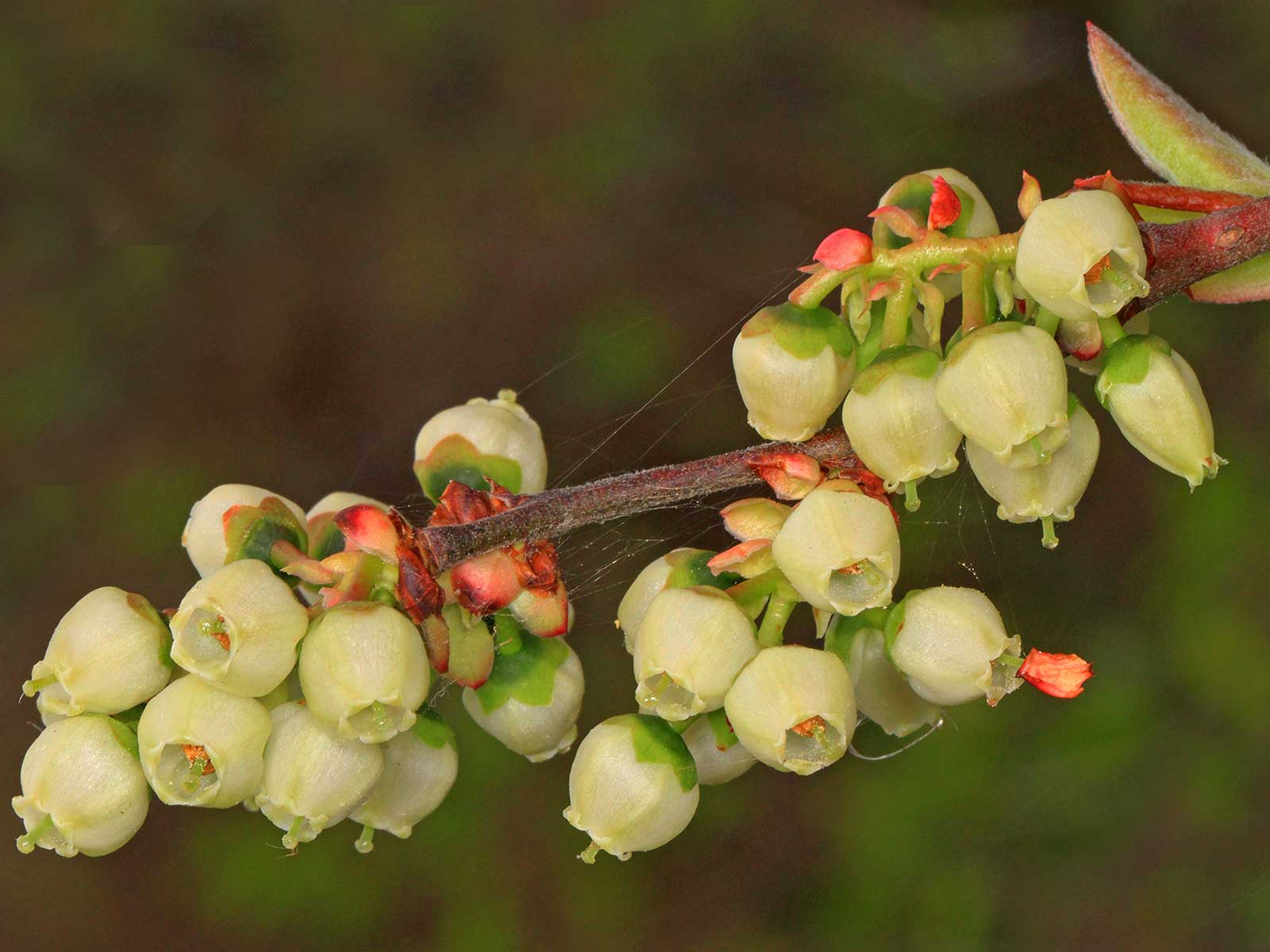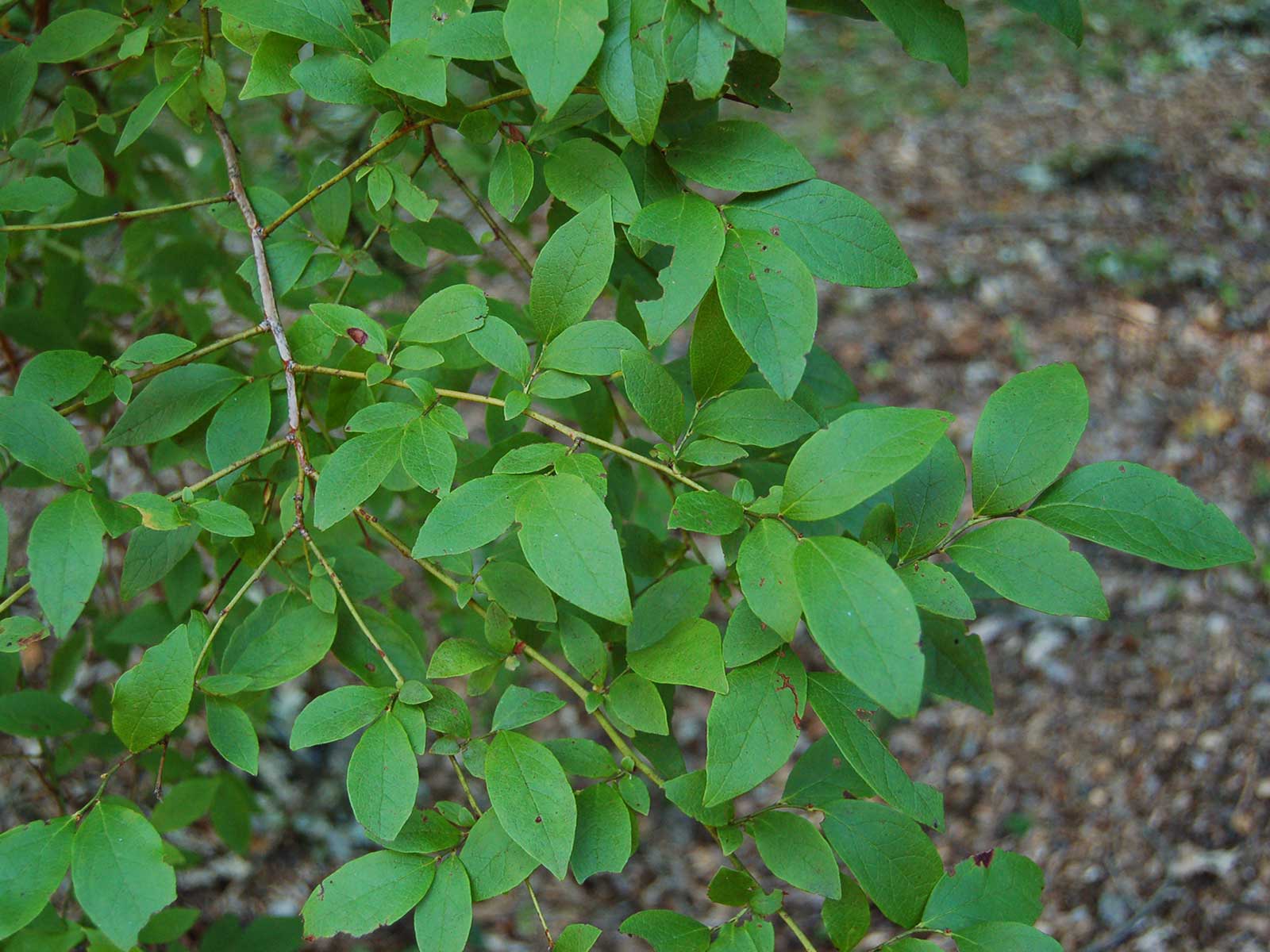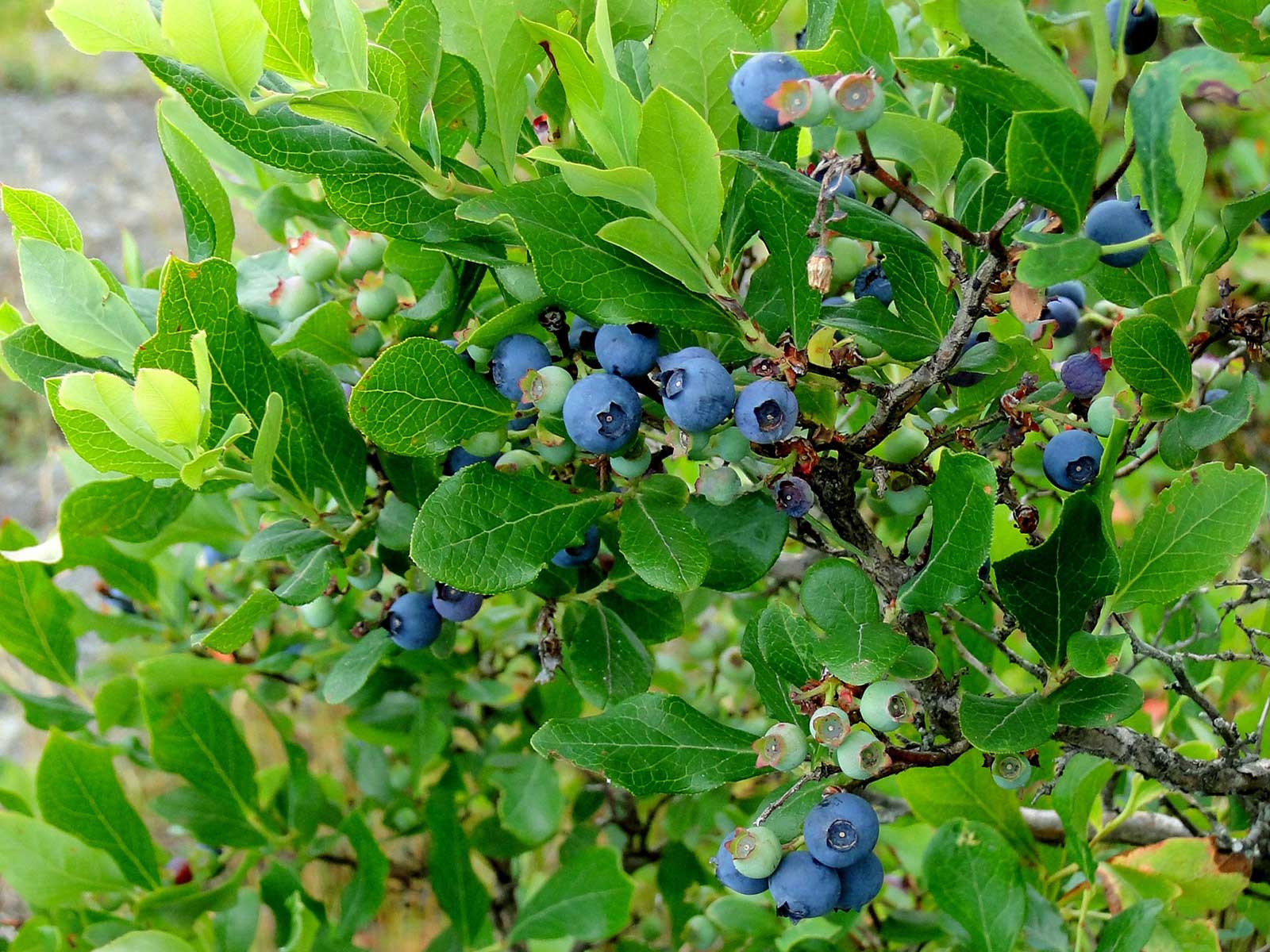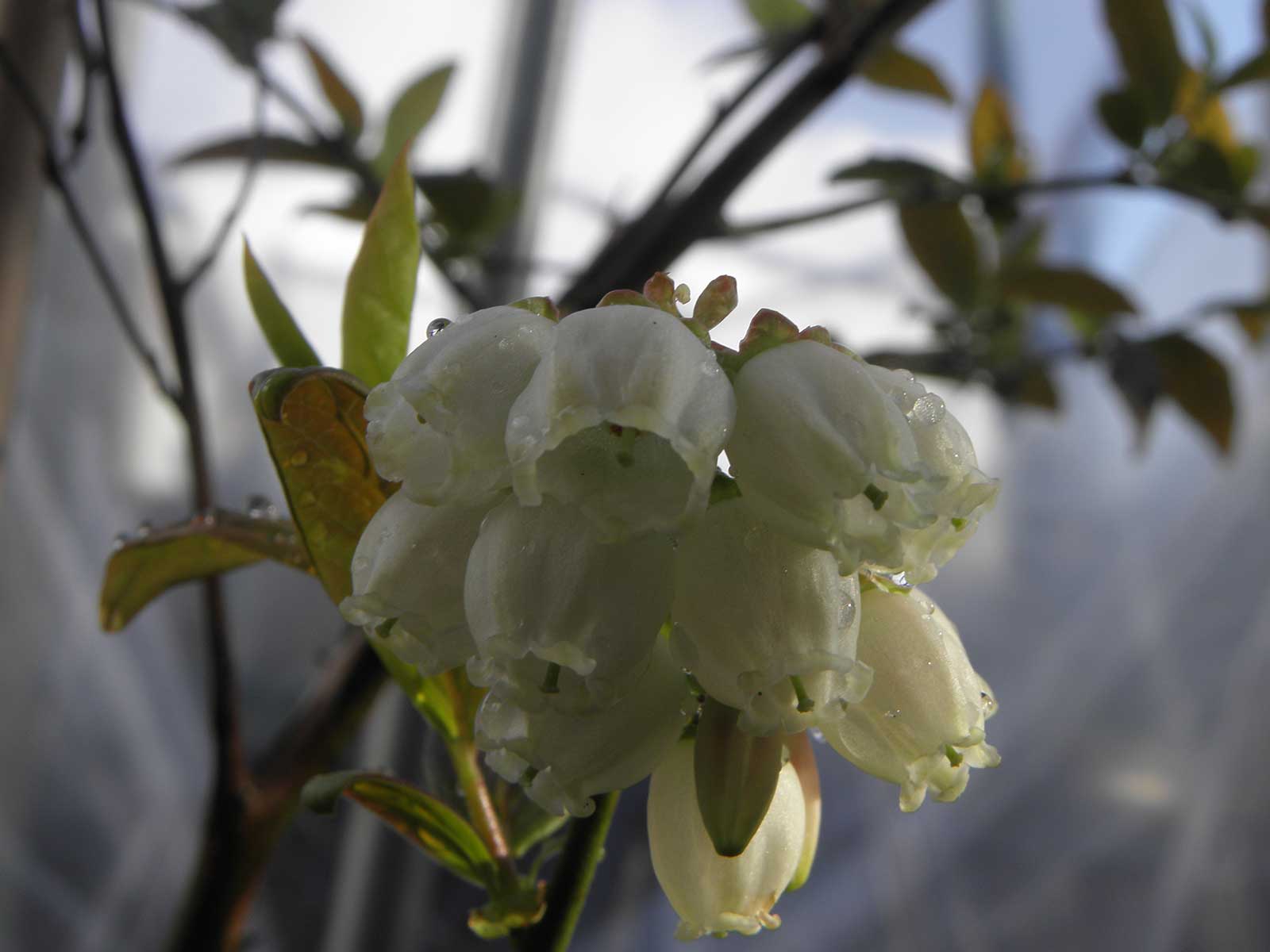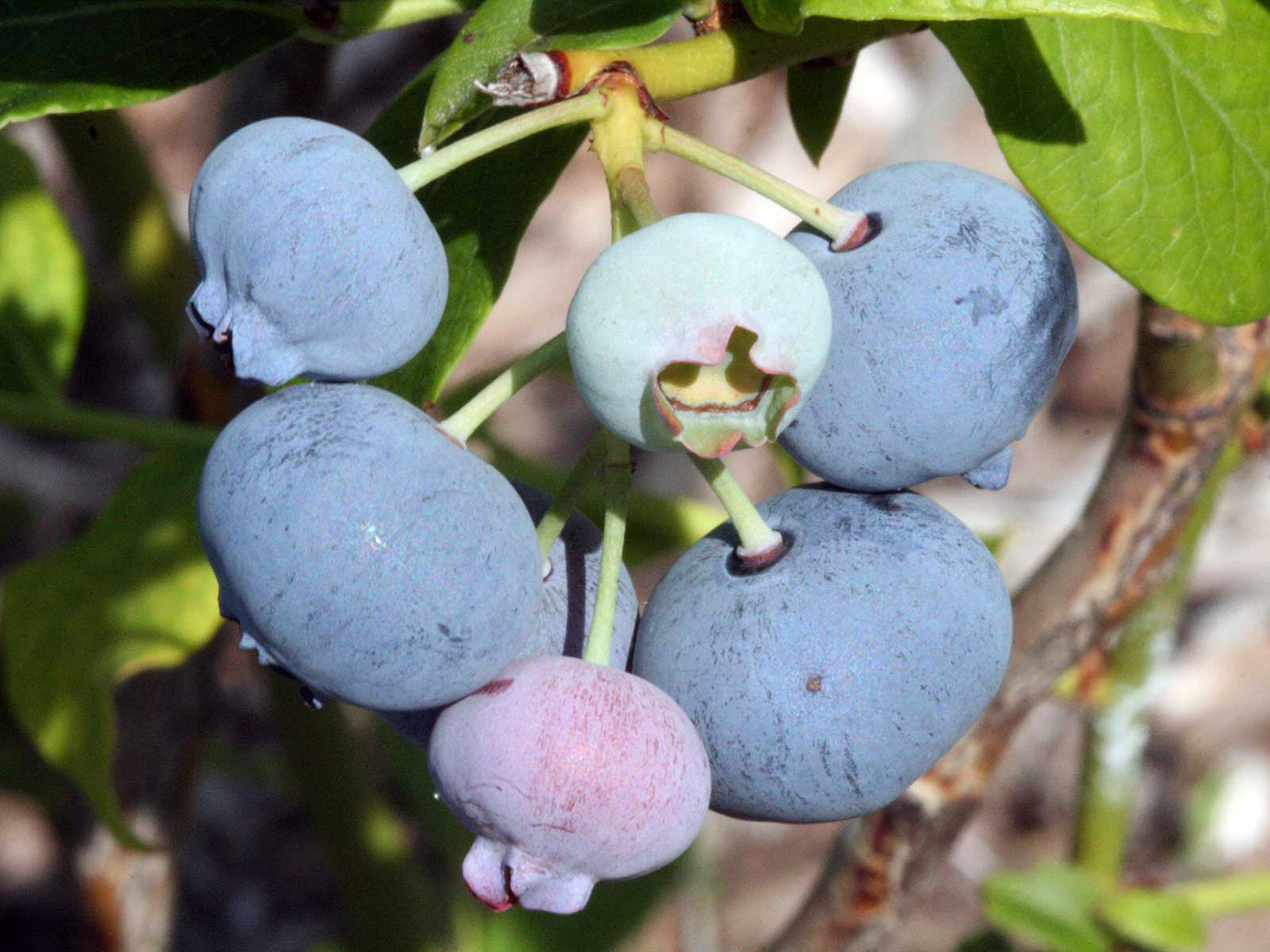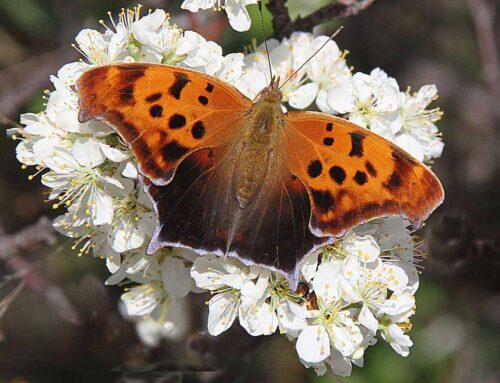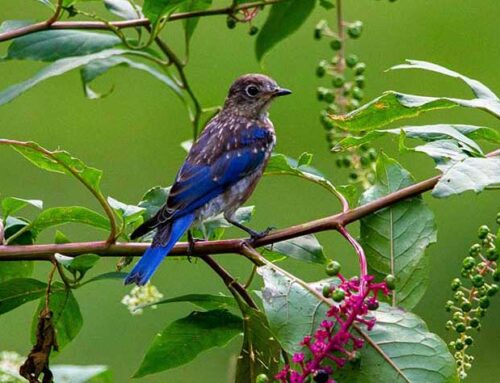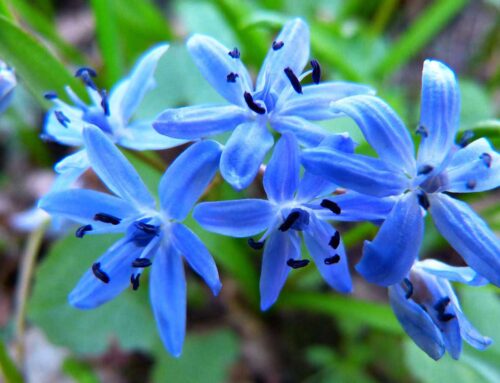“A nation that destroys its soils destroys itself. Forests are the lungs of our land, purifying the air and giving fresh strength to our people.”
Sustainable Landscaping with Native Plants
Northern highbush blueberry, Vaccinium corymbosum, is a deciduous shrub native to eastern North America, from Nova Scotia and Ontario south to Alabama, and west to Wisconsin. Plants grow in an upright form, and depending upon variety, may range from 3 feet to over of 6 feet in height. In their wild state, highbush blueberries may be found in thickets near or under wooded areas and grow best in a well-drained sandy loam, rich in organic matter. Clay soils can be made suitable for blueberries by adding organic matter (such as peat moss) and sand.
The dark glossy green leaves are elliptical and up to 5 cm long. In fall, the leaves change to a brilliant red. The flowers are white, bell-shaped, 10 mm long. The fruit is a dark blue to black berry. These plants are vigorous and very cold-hardy, making them perfect for growers in cooler climates and northern regions. As a landscape bonus, lovely flowers blossom on these bushes in spring, while gorgeous foliage looks beautiful in summer and turns to stunning colors in fall.
Blueberries provide important summer and early fall food for numerous species of game birds, songbirds, and mammals.Songbirds which feed heavily on the fruits of highbush blueberry include the scarlet tanager, eastern bluebird, scrub jay, rufous-sided towhee, gray catbird, northern mockingbird, brown thrasher, northern cardinal, and the American robin and several other thrushes.
Useful for ornamental purposes (flowers, fruit, quality summer foliage and fall color) as well as for fruit production (blueberries). It is effective in shrub borders or as part of less formal shrub plantings in areas such as native plant gardens or open woodlands. Particularly effective in conjunction with rhododendrons and azaleas which share similar acidic soil requirements.
Highbush Blueberry Resources
At Lincoln Landscaping cultivating the environment is our life and livelihood. It is our number one goal to help our clients create and maintain beautiful landscapes while reducing the impact on the environment. Whether you are interested in a pollinator landscape garden design and build or other landscaping or property management project; we can create for you an environmentally friendly, organic and beautiful property.
Lincoln Landscaping “The Natural Choice”
Mike Kolenut President & CEO
https://lincolnlandscapinginc.com
(201) 848-9699

